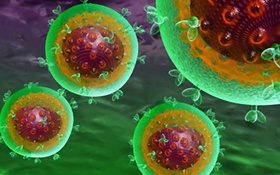Home > Products > Animal Tumor Cell Lines >
Animal Tumor Cell Lines

Compared with normal cells, tumor cells have abnormal metabolism and proliferation. To better understand the differences between cancer cells and normal cells in various aspects, using animal cancer cells as a cancer model is an important subject for humans to overcome cancer. AcceGen animal cancer cell lines cover dozens of different animal species including mouse, rat, bovine, canine, etc. We have hundreds of animal carcinoma cell lines and normal tissue cell lines from different organs and tissues. For mouse tumor cells, we have more than 300 types in stock to provide you with a comprehensive selection.
Cell Line Types
| Cat.# | Name | Description | Price |
|---|---|---|---|
| ABC-TC0466 | JC | Tumorigenecity: Isoenzyme: Histopathology: adenocarcinomaSubculture: Split ratio: Media change: Reve...more | +inquiry |
| ABC-TC0463 | J774A.1 | J774A.1 Cells are active in antibody dependent phagocytosis [Pubmed: 1101071]. Their growth is inhib...more | +inquiry |
| ABC-TC0444 | IEC 6 | Rat small intestine epithelial. Normal rat small intestine epithelial cells which synthesise fibrone...more | +inquiry |
| ABC-TC0443 | IEC 18 | Normal rat ileum. Derived from normal epithelial cells of the rat ileum. Cells should undergo at lea...more | +inquiry |
| ABC-TC0432 | HTC | Rat hepatoma. Derived from a rat ascites tumour, which in turn was derived from a solid hepatoma ind...more | +inquiry |
| ABC-TC0380 | HEP-CBR-E1 | Established from the primary hepatocellular carcinoma of C3H/HE mice, these tumor were induced in C3...more | +inquiry |
| ABC-TC0379 | HEP-CBR-C9 | Established from the primary hepatocellular carcinoma of C3H/HE mice, these tumor were induced in C3...more | +inquiry |
| ABC-TC0378 | HEP-CBR-1W | Established from the primary hepatocellular carcinoma of C3H/HE mice, these tumor were induced in C3...more | +inquiry |
| ABC-TC0377 | HEP-CBR-1H | Established from the primary hepatocellular Adenocarcinoma of C3H/HE mice, these tumor were induced ...more | +inquiry |
| ABC-TC0376 | Hepa-1c1c7 | Tumorigenecity: Isoenzyme: Histopathology: HepatomaSubculture: Remove medium, add fresh 0.25% Trypsi...more | +inquiry |
| ABC-TC0286 | H9c2 (2-1) | Rat BDIX heart myoblast. Skeletal muscle properties. Myotubes formed at confluency respond to acetyl...more | +inquiry |
| ABC-TC0282 | H-4-II-E | Rat hepatoma Reuber H35. Exhibits high arylhydrocarbon hydroxylase inducibility and is used to detec...more | +inquiry |
| ABC-TC0281 | H4II | Rat skin Hepatocellular carcinoma. From H-35 Reuber hepatoma induced by chemical carcinogenesis in a...more | +inquiry |
| ABC-TC0277 | GS-9L | Rat glioma. The GS-9L rat glioma cell line was derived from a N-nitrosomethylurea-induced tumour. ...more | +inquiry |
| ABC-TC0276 | GPE 86 | Species: mouse, NIH Swiss; Tissue: kidney, embryonic. ...more | +inquiry |
| ABC-TC0274 | GK1.5 | Animals were immunized with the cloned cytotoxic T lymphocyte lines V4 and 243/2.5; Spleen cells wer...more | +inquiry |
| ABC-TC0272 | GH3 | Tumorigenecity: Isoenzyme: Histopathology: tumorSubculture: Remove culture medium and rinse the cell...more | +inquiry |
| ABC-TC0257 | FRTL-5 | FRTL-5 is a stable thyroid cell line derived from the thyroid gland of the Fischer rat. These cells ...more | +inquiry |
| ABC-TC0256 | FRTL | The cells accumulate iodide intracellularly. Absolute requirement for 0.1 To 0.5% Calf serum in addi...more | +inquiry |
| ABC-TC0255 | FR | Rat Sprague-Dawley skin. Established from a skin biopsy of a foetal (18 day gestation) germ-free Spr...more | +inquiry |





